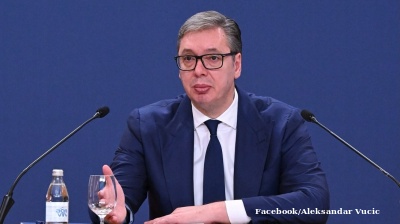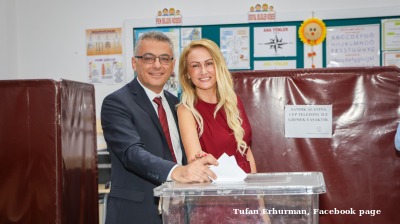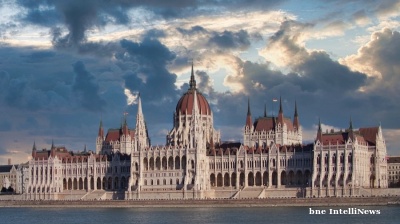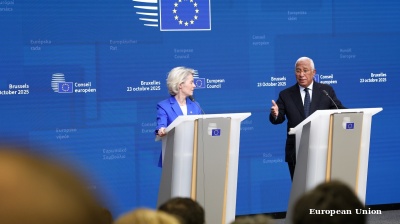The integration of the Eastern Partnership candidates, led by Ukraine, represents a geopolitical and security objective, not just a mechanical reasoning of the EU's enlargement policy. This approach may point to some incipient and sectoral differences, of conceptual and practical nature, in the way the EU applies the logic of accession to the Western Balkan candidate countries and those of the Eastern Partnership.
The EU strategy for enlargement does not establish a formal geographical division between the Eastern Partnership and the candidates from the Western Balkans, including Turkey. While the view persists that the new candidates from the East have energised the process, those from the Western Balkans are stuck in slow and nebulous accession negotiations, compromised by EU reservations on the one hand and by the stagnation of transformation processes at local level on the other. The regime of Alecsandar Vučić in Serbia and the pro-Serbian region of Bosnia and Herzegovina feed an (anti)model of European integration at the subregional level. Inspired by the balancing act used by Hungarian Prime Minister Viktor Orban, the Serbian leader is resorting to tactics of cooperation and confrontation (“hedging”) to extract an attitude of tolerance from Brussels, inhibiting its side of conditionality when it comes to accessing pre-accession funds.
The EU's interdependence on Serbia's lithium resources and Belgrade's (de)escalation in relation to Kosovo keep Brussels in a strategic uncertainty. The EU's intention is to combine a mutually beneficial partnership with Serbia in the field of critical mineral resources with the revival of the accession dialogue, the "green transition" and investment in "European strategic autonomy" and the reduction of dependence on China ("de-risking"). The main drawback is that in this process the EU voluntarily reduces the requirement of political accession criteria towards Serbia, which, for the moment, are sacrificed in favour of Serbian lithium resources. In addition, Russia's military actions against Ukraine make Brussels more cautious with Belgrade in order to keep Serbian-Kosovar tensions within a manageable margin. In other words, to ensure peace in the Balkans and to avoid armed instability, concomitantly, in two neighbourhoods, Brussels does not exert excessive pressure on the Vučić regime. This is helped by the position of individual Member States, such as France, which puts the interests of its military industry before the convergence of the candidate countries with the EU sanctions policy against Russia. The predominance of national priorities was made clear when Emmanuel Macron justified in Belgrade that Serbia has no obligation to adopt sanctions against Russia because it is only a candidate country.
The (anti)model promoted by Vučić in Serbia, if not overshadowed by the positive political energy of EU accession in the Western Balkans, minimises the possibility of the next wave of enlargements materializing in 2030. The (anti)model is growing despite the lack of a competitive and effective pro-European model among the other five Balkan states. Finally, the resurgence of Turkey's interest in EU enlargement policy multiplies the number of candidate states that want to establish a relationship of parity with the EU in the accession process, undermining the traditional patronising-mentorship role of Brussels in relation to the candidate countries.
Ukraine: high ambitions in the face of uncertain prospects for 2030
Of the 10 candidate countries interested in joining the EU, those in the Eastern Partnership are among the most eager (but not the only ones). Ukraine is the country that has opened the door to the EU enlargement policy towards Moldova and Georgia and the rest of the region. Direct aggression from Russia has been the main driver of the new dimension of the EU enlargement policy towards the East.
In the case of Ukraine, the agenda of accession to the European bloc is linked to the post-war reconstruction of the country, traumatised by continued Russian aggression at social, political and economic levels. Achieving this goal in just five years until 2030 seems an intangible deadline because, in addition, to absorbing European policies, strengthening the rule of law and creating strong anti-corruption policies, Kyiv must repair its economy and infrastructure, but also return the approximately 4mn Ukrainian refugees or at least some of them. One factor that may push forward progress towards the 2030 accession goal may be the lack of a real option to join Nato, which will depend on the terms of peace negotiations. For now, the prolongation of the war reduces Ukraine's ability to join the EU in general, and even more so in 2030.
The 2030 enlargement agenda is extremely ambitious, both for the EU and for some candidate countries. However, the Western Balkans are faced with the implications of the transactional (anti-)model promoted by the Vučić regime in Serbia, with the direct blessing of Brussels.
On the other hand, the candidate countries for the Eastern Partnership denote greater ambitions to join the EU at an accelerated pace, not yet affected by the fatigue of slow and uncertain accession, in which most Western Balkan countries find themselves. For Ukraine, EU accession is of an existential nature, but the achievement of the goal depends on the dynamics of the war. Therefore, the sooner the conditions for peace negotiations are created, the sooner the Ukrainian authorities will redirect all their energy towards European integration. That said, it is inevitable that Ukraine will have to combine post-war reparation with the accession process.
Moreover, the fact that Olga Stefanishina has remained in the post of Deputy Prime Minister, along with the portfolio of Minister of Justice, during the latest government reshuffle initiated by Volodymyr Zelenskiy, shows that, in addition to European integration, Ukraine will continue seeking Nato membership. There is no intention in Kyiv to seek EU membership at the expense of or in exchange for Nato candidacy. As long as the Russian threat persists, security will be at the heart of the EU accession process of the Eastern Partnership candidates. Ukraine will be an active reminder of the interdependence between the internal reforms of EU integration and the need to invest in security that protects the “Europeanisation” achievements of the Eastern European candidates. This is partly linked to the “de-Russification” process that accelerated in light of the war and which Moscow is currently fighting through various attempts at malign media and political interference.
The EU must decide whether security and reforms should receive equal attention throughout the accession process. This may not be the case in the Western Balkans, where the EU approaches the security issue by being accommodating to Serbia. However, for Ukraine and other eastern EU candidates, a close relationship between strengthening security and managing sectoral transformation in line with the EU acquis and standards seems to be the only way to enter the EU with a capable and resilient state in the face of the Russian threat.
Opinion

A year after the Novi Sad disaster, Belgrade faces one crisis after another
Serbia’s government is grappling with a convergence of crises which threaten to erode President Aleksandar Vucic’s once-dominant position.

Don’t be fooled, Northern Cyprus’ new president is no opponent of Erdogan, says academic
Turkey’s powers-that-be said to have anticipated that Tufan Erhurman will pose no major threat.

COMMENT: Hungary’s investment slump shows signs of bottoming, but EU tensions still cast a long shadow
Hungary’s economy has fallen behind its Central European peers in recent years, and the root of this underperformance lies in a sharp and protracted collapse in investment. But a possible change of government next year could change things.

IMF: Global economic outlook shows modest change amid policy shifts and complex forces
Dialing down uncertainty, reducing vulnerabilities, and investing in innovation can help deliver durable economic gains.



